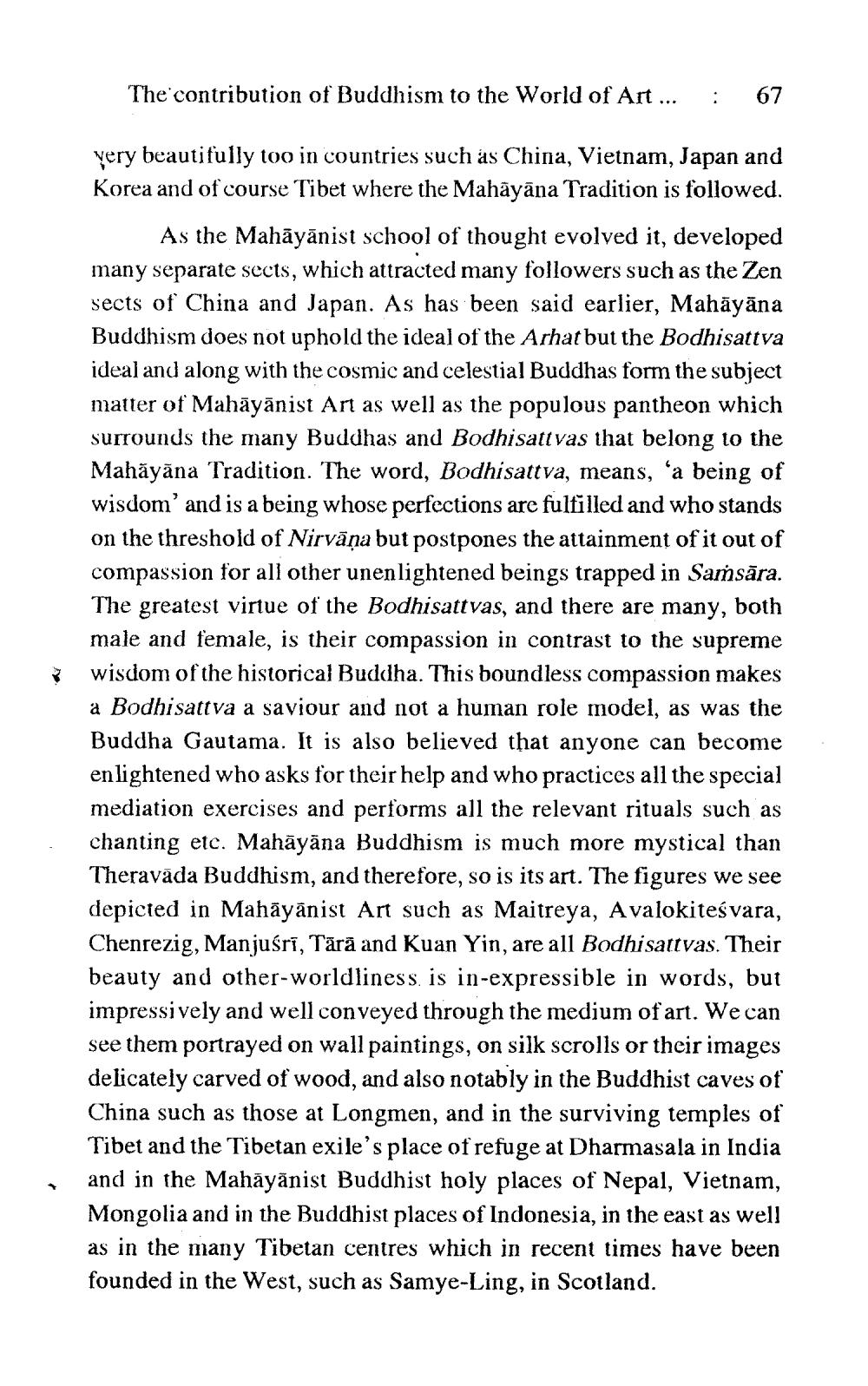________________
The contribution of Buddhism to the World of Art...
67
Yery beautifully too in countries such as China, Vietnam, Japan and Korea and of course Tibet where the Mahāyāna Tradition is followed.
As the Mahāyānist school of thought evolved it, developed many separate sects, which attracted many followers such as the Zen sects of China and Japan. As has been said earlier, Mahāyāna Buddhism does not uphold the ideal of the Arhat but the Bodhisattva ideal and along with the cosmic and celestial Buddhas form the subject matter of Mahāyānist Art as well as the populous pantheon which surrounds the many Buddhas and Bodhisattvas that belong to the Mahāyāna Tradition. The word, Bodhisattva, means, ‘a being of wisdom and is a being whose perfections are fulfilled and who stands on the threshold of Nirvāņa but postpones the attainment of it out of compassion for all other unenlightened beings trapped in Saṁsāra. The greatest virtue of the Bodhisattvas, and there are many, both male and female, is their compassion in contrast to the supreme wisdom of the historical Buddha. This boundless compassion makes a Bodhisattva a saviour and not a human role model, as was the Buddha Gautama. It is also believed that anyone can become enlightened who asks for their help and who practices all the special mediation exercises and performs all the relevant rituals such as chanting etc. Mahāyāna Buddhism is much more mystical than Theravada Buddhism, and therefore, so is its art. The figures we see depicted in Mahāyānist Art such as Maitreya, Avalokitesvara, Chenrezig, Manjuśrī, Tārā and Kuan Yin, are all Bodhisattvas. Their beauty and other-worldliness is in-expressible in words, but impressively and well conveyed through the medium of art. We can see them portrayed on wall paintings, on silk scrolls or their images delicately carved of wood, and also notably in the Buddhist caves of China such as those at Longmen, and in the surviving temples of Tibet and the Tibetan exile's place of refuge at Dharmasala in India and in the Mahāyānist Buddhist holy places of Nepal, Vietnam, Mongolia and in the Buddhist places of Indonesia, in the east as well as in the many Tibetan centres which in recent times have been founded in the West, such as Samye-Ling, in Scotland.




